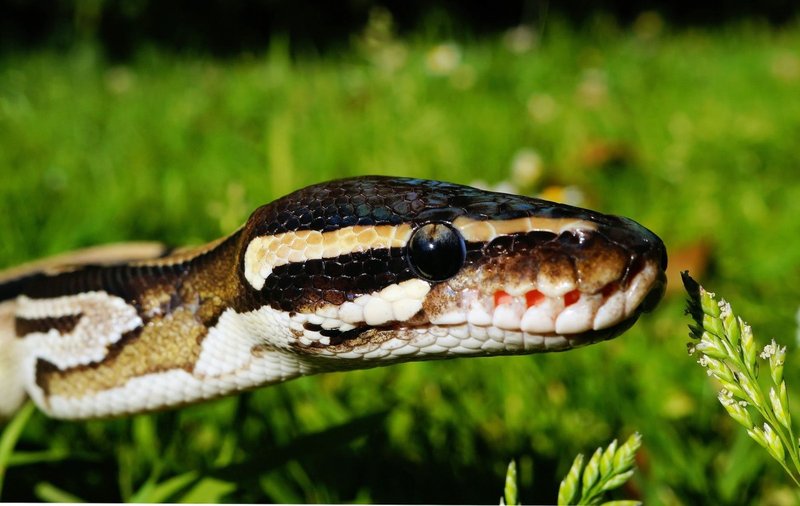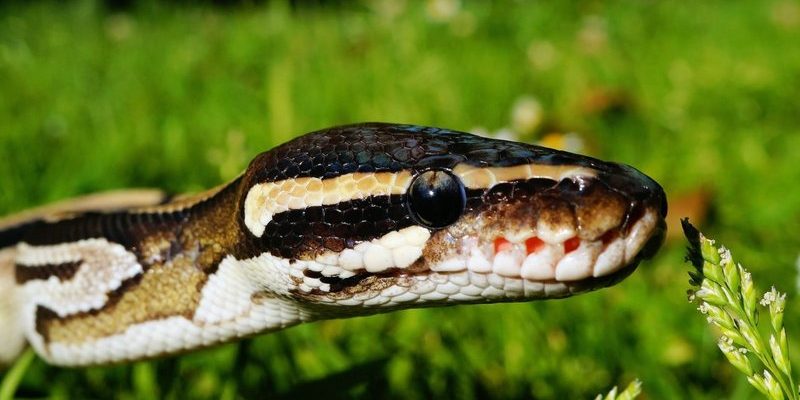
From its striking colors to its fascinating behavior, the ball python is a true testament to the wonders of evolution. Imagine it coiled up in the grass, blending in with its surroundings, or wrapping itself tight to fend off threats. These adaptations allow the ball python to not just survive but actually flourish in challenging circumstances. Let’s dive deeper into what makes this creature such a successful survivor.
Camouflage: Nature’s Armor
One of the ball python’s most impressive adaptations is its camouflage. With a mix of browns, blacks, and yellows, its scales help it blend seamlessly into its habitat. This is especially useful in the wild, where being unnoticed can mean the difference between life and death. Think of it like wearing a perfect outfit for a game of hide-and-seek—you want to be invisible to your competitors.
When a ball python feels threatened, it often resorts to curling up into a tight ball, hence its name. This instinct not only hides its vulnerable head but also makes it look like a hard-to-access target. Predators might think twice before attempting to bite down on a tightly coiled snake.
Behavior in Response to Threats
In addition to its camouflage, the ball python exhibits some clever behavior when faced with danger. Instead of trying to flee, which may not always be possible, it relies on its defensive posture. By curling into a ball and covering its head, it protects itself from predators. This behavior is particularly effective against larger animals that might see the snake as a meal.
Also, ball pythons are known for their calm demeanor. Many pet owners marvel at how docile these snakes can be compared to their more aggressive cousins. This peaceful nature isn’t just charming—it’s an adaptation that helps them avoid unnecessary confrontations. A snake that can stay out of trouble has a much better chance of surviving in the wild.
Diet and Feeding Adaptations
The ball python is a constrictor, meaning it kills its prey by wrapping around it and squeezing until it’s unable to breathe. This adaptation is perfect for a snake that primarily feeds on small mammals like rodents. The ball python often waits patiently for its food to come close, using its excellent sense of smell to detect potential meals.
You might be wondering how it can eat something so much larger than itself. Well, like a magician, it can unhinge its jaw to swallow prey that’s much wider than its head. This jaw structure is a fascinating adaptation that allows it to consume meals that can be multiple times its size. After a big meal, it might not eat again for weeks, which is helpful in the wild, where a reliable food source isn’t always available.
Heat Sensing and Hunting Skills
Another incredible survival adaptation in ball pythons is their ability to detect heat. They possess thermal sensors located in their facial pits that let them sense the body heat of potential prey. This is similar to how certain high-tech gadgets work, allowing them to see in the dark without relying on light.
This heat detection is especially useful for nocturnal hunting, where visibility is low. Imagine being able to hunt with your eyes closed, relying solely on the warmth of your prey. This trait not only enhances their hunting success but also minimizes energy expenditure, as they don’t have to roam around searching aimlessly for food.
Active vs. Passive Hunting Techniques
You might think hunting is all about being fast and aggressive, but often, patience pays off. Many ball pythons practice ambush hunting. They’ll hide and remain still for long periods, waiting for the right moment to strike. This low-energy approach is a smart survival tactic, especially in places where food can be scarce.
In contrast, other snake species might chase their prey. The ball python’s strategy not only conserves energy but also decreases the chances of drawing attention from potential predators. It’s a great example of how adaptability can come in different forms.
Reproductive Adaptations
The reproductive habits of ball pythons also showcase their survival instinct. Female ball pythons can store sperm after mating, allowing them to fertilize eggs later, even if they don’t encounter a male again. This adaptation ensures that they can reproduce even in challenging environments where males might not always be present.
Furthermore, female ball pythons show remarkable care for their eggs. They will coil around them, using their body heat to incubate the eggs until they hatch. This nurturing behavior increases the survival chances of the offspring, contributing to the longevity of the species.
Resilience in Captivity and the Wild
Ball pythons are also known for their resilience. In captivity, they are one of the most popular pet snakes, thriving in various environments. Their adaptability to different habitats, ranging from grasslands to forests, showcases their versatility as a species.
Interestingly, ball pythons can adjust to various living conditions. They can tolerate fluctuations in temperature and humidity, making them less susceptible to environmental changes. This ability to adapt makes them a favorite among pet owners and also helps them survive when natural habitats are altered.
Conservation and Awareness
Despite their incredible adaptations, ball pythons face threats from habitat loss and the pet trade. Understanding their behaviors and needs is crucial for conservation efforts. By raising awareness about the importance of preserving their habitats, we can help ensure these snakes continue to thrive in the wild.
As we learn more about ball pythons and their unique adaptations, we gain insight into the broader picture of biodiversity and the interconnectedness of all species. Knowing how these snakes survive and adapt helps foster a deeper appreciation for wildlife and the importance of protecting it.
The ball python’s adaptations are a fantastic example of how survival isn’t just about brute strength; it’s about smart strategies and embracing change. From its camouflage to its hunting techniques and reproductive habits, every characteristic plays a vital role in its survival story.
As we explore the world of ball pythons, let’s remember that their survival is intertwined with our actions. Whether you’re a pet owner or a nature lover, understanding these traits can help you appreciate the beauty and complexity of life around us. The ball python is more than just a snake; it’s a survivor, showcasing the wonders of evolution in action.

